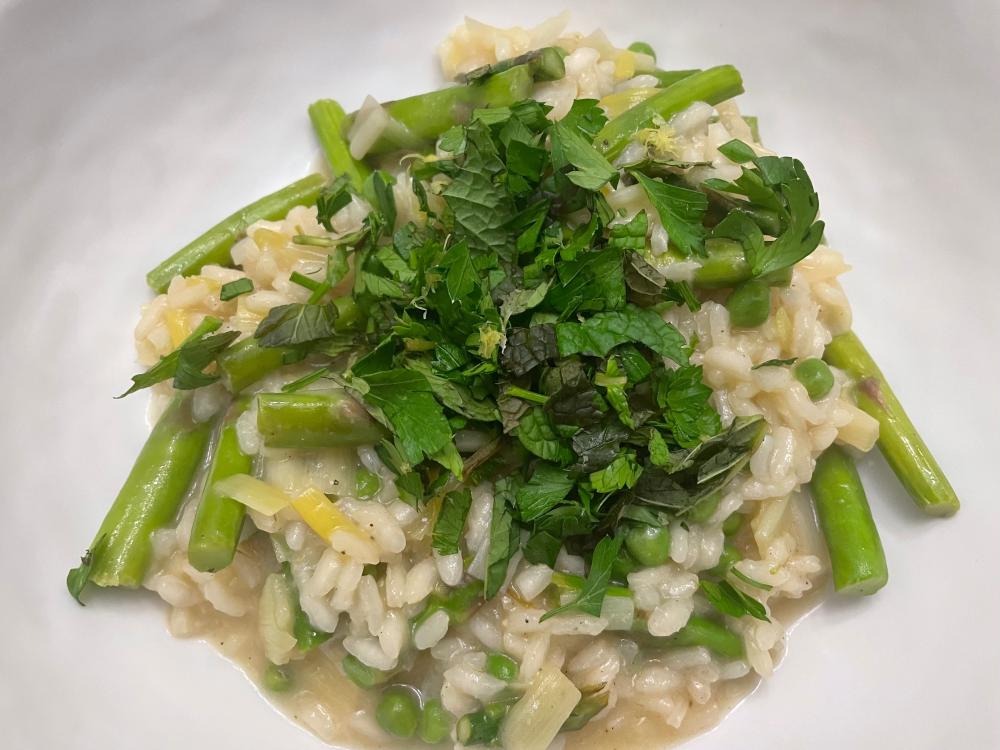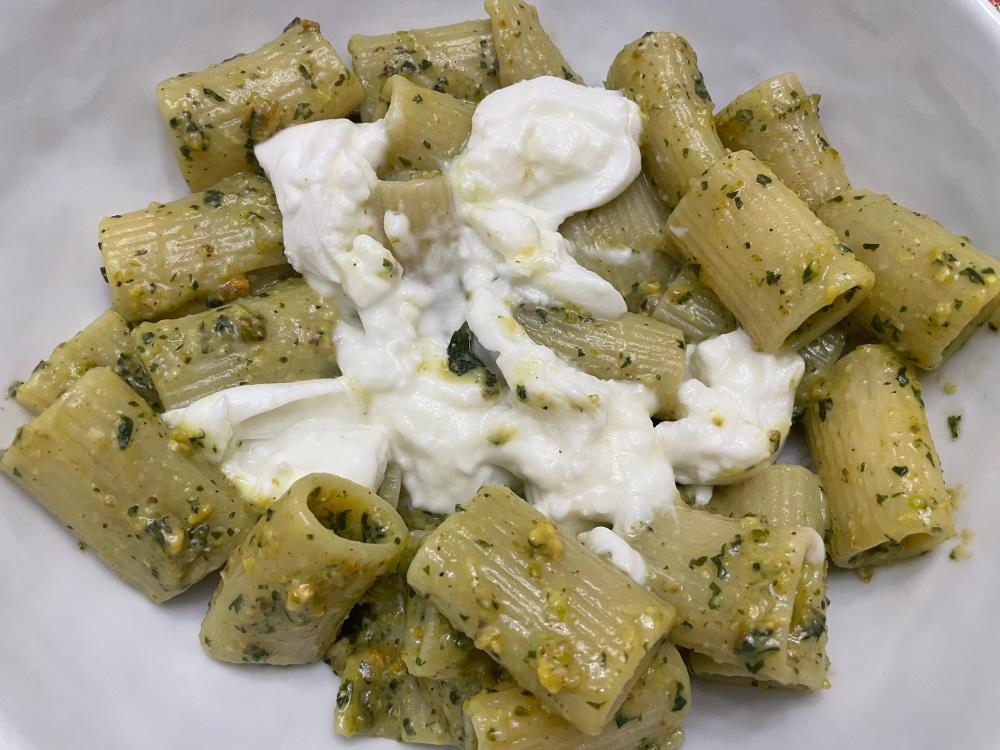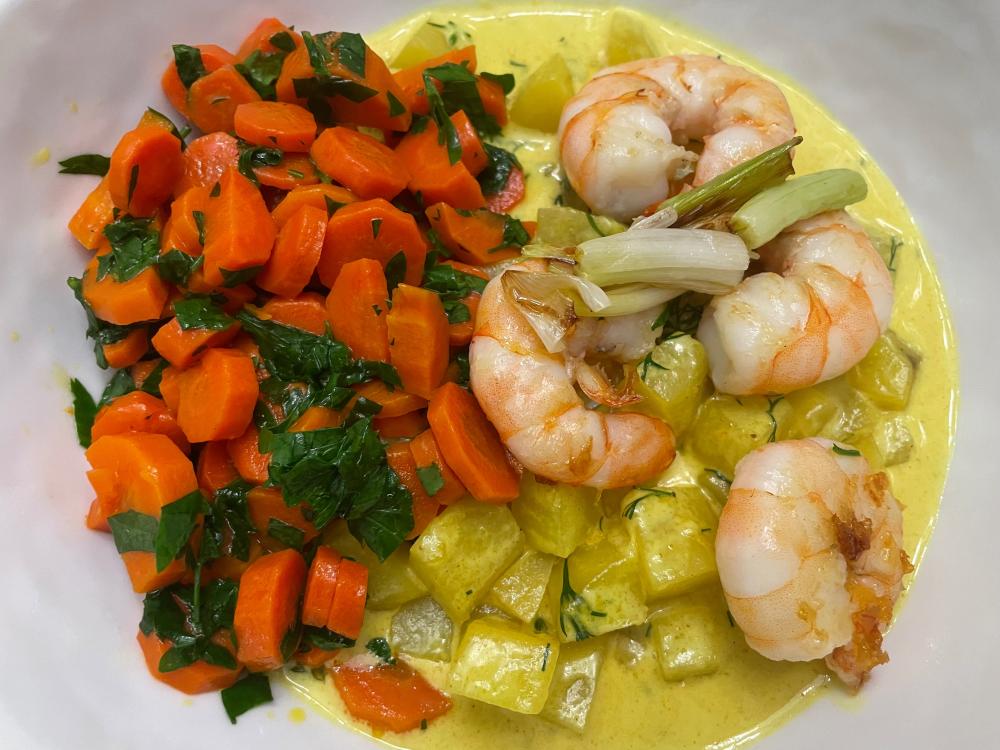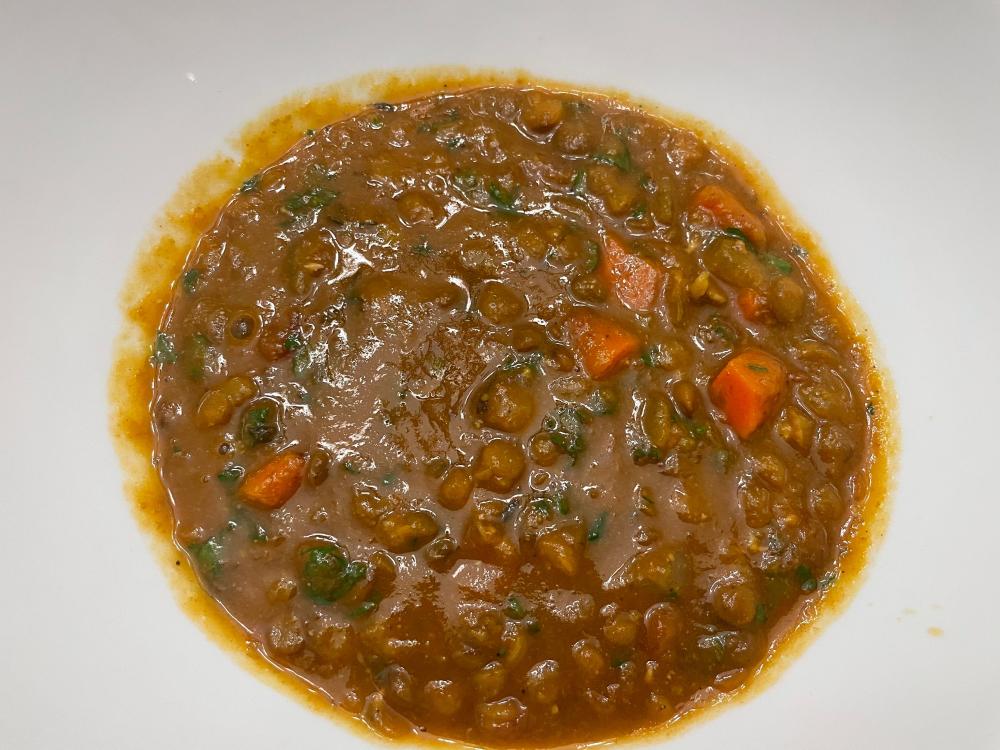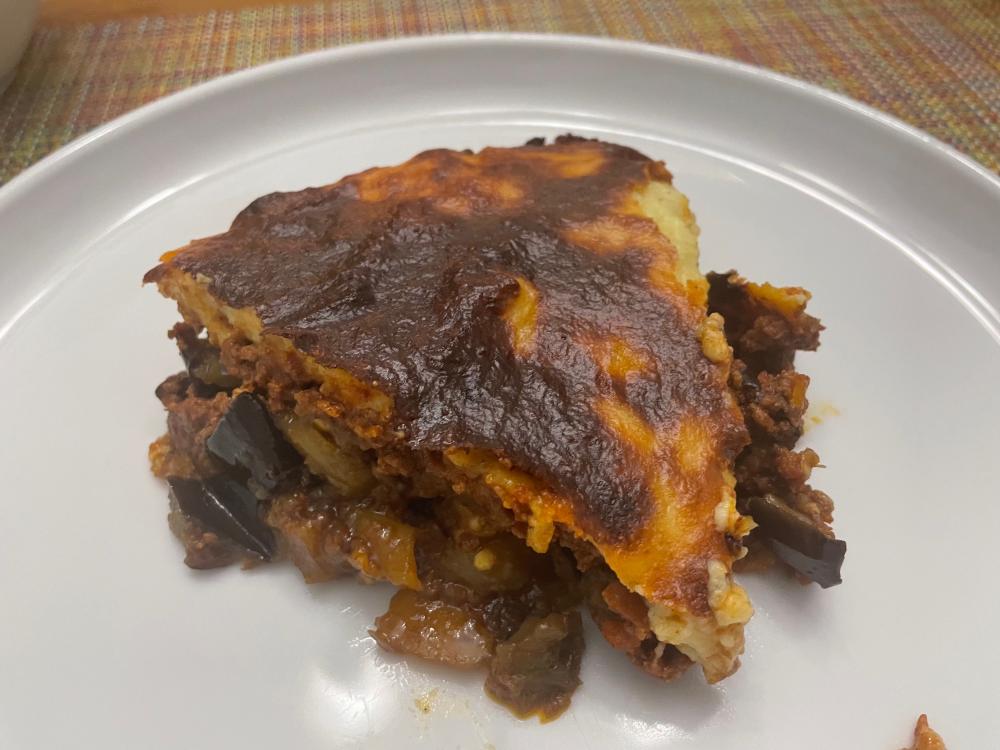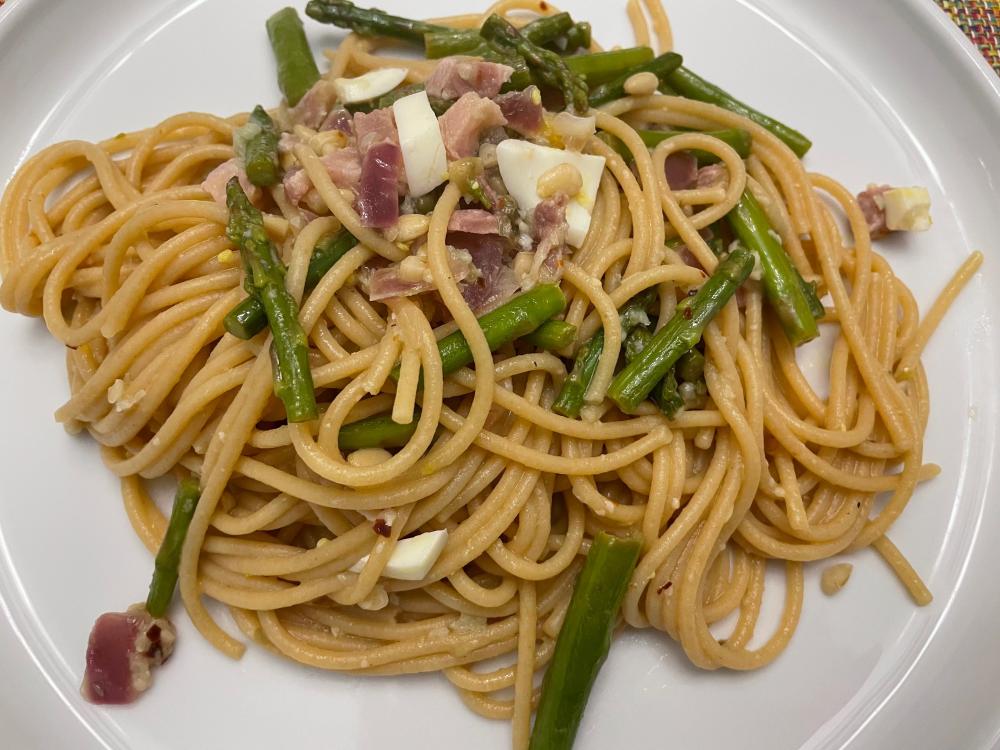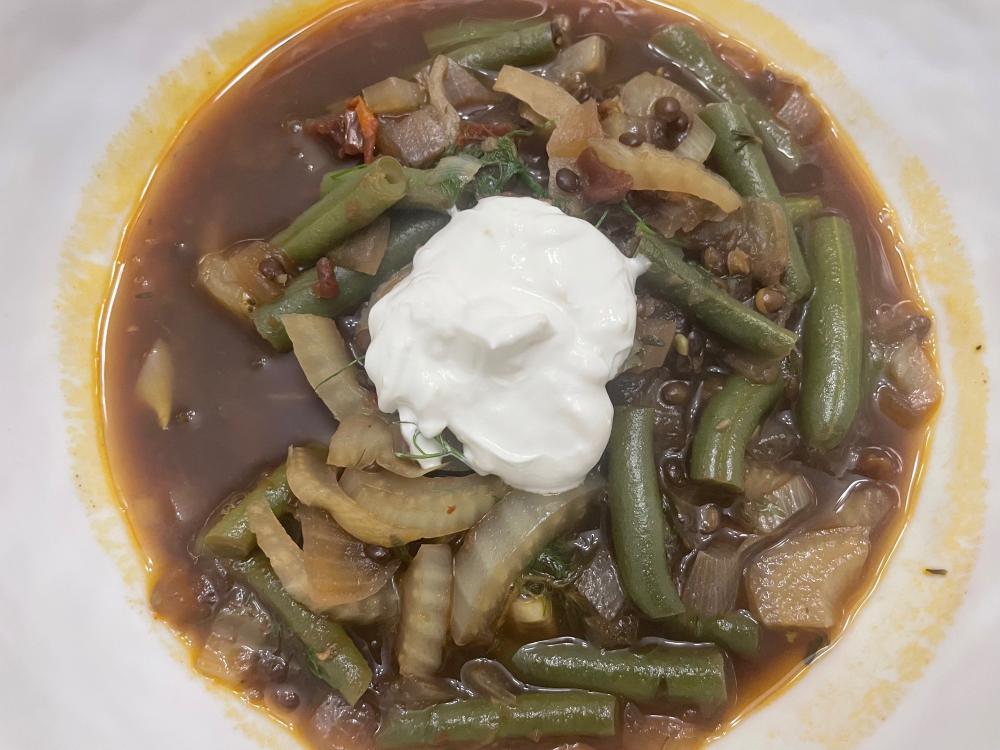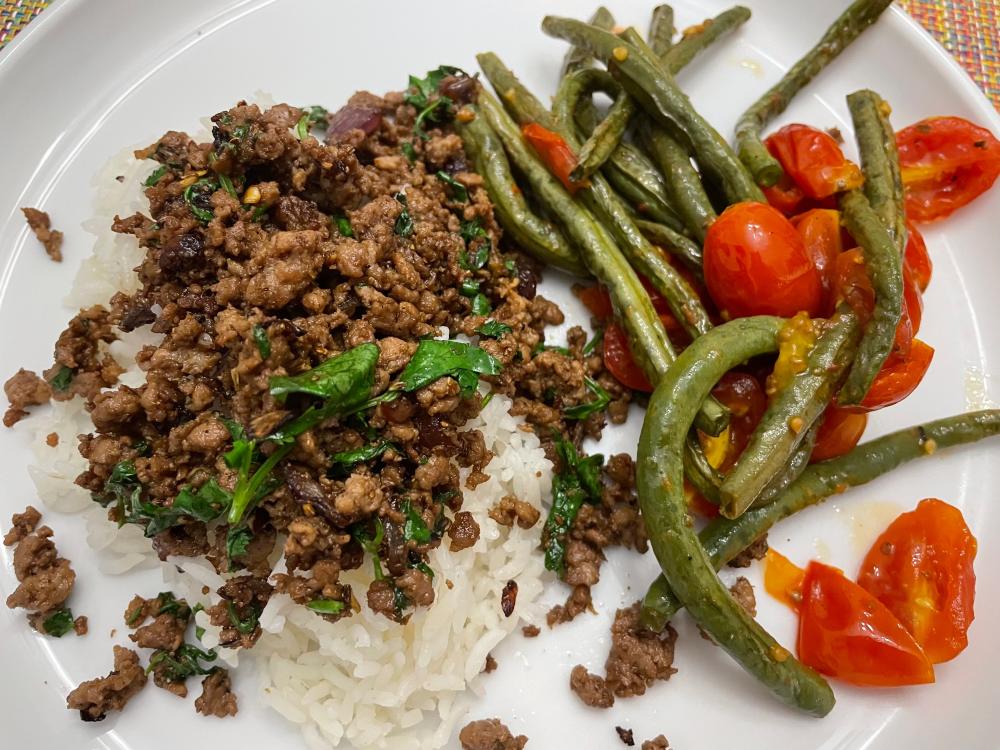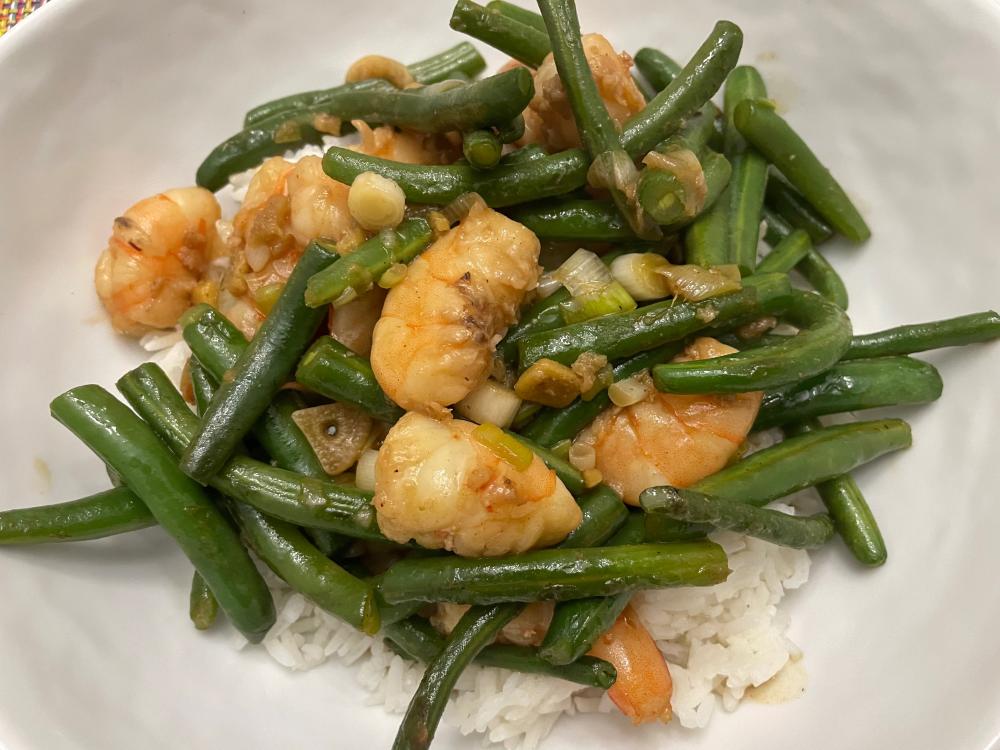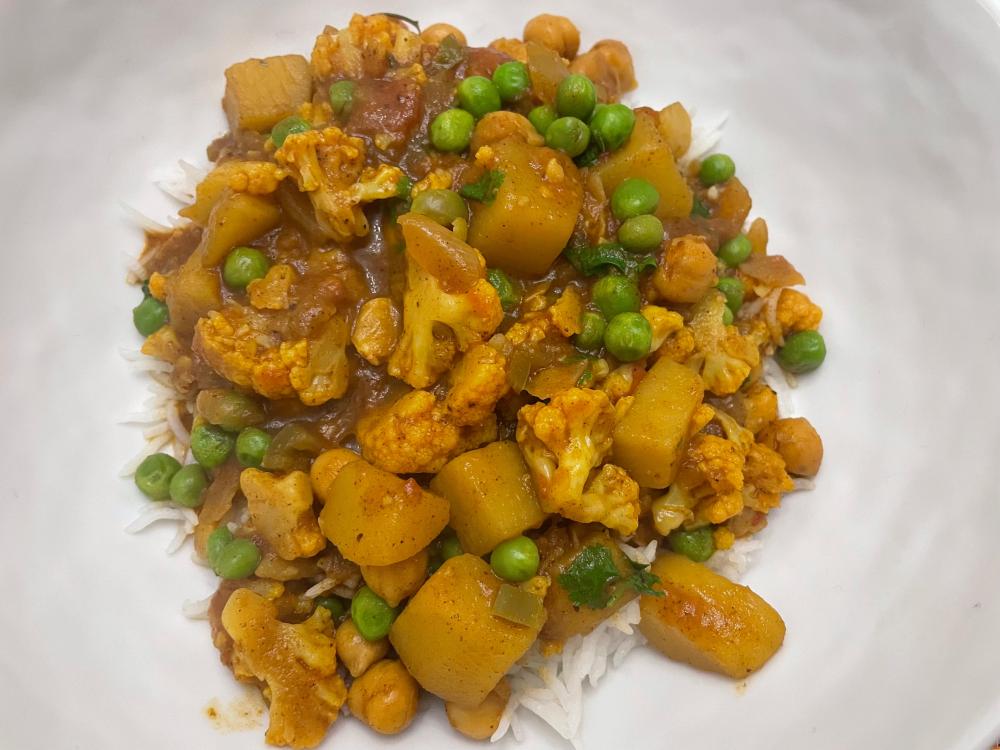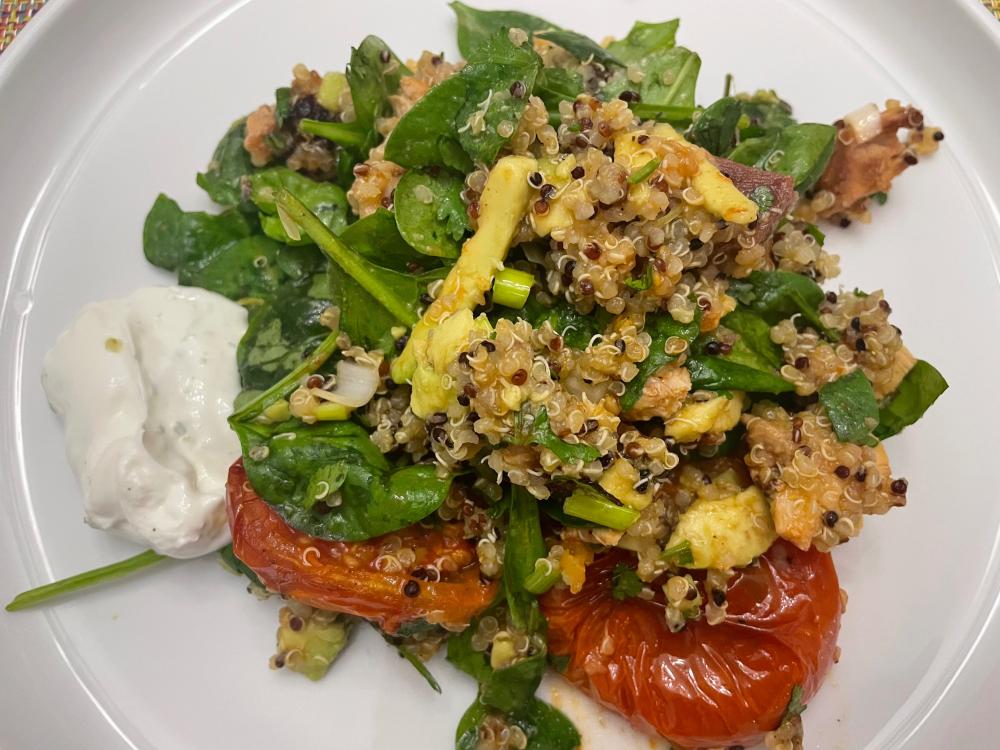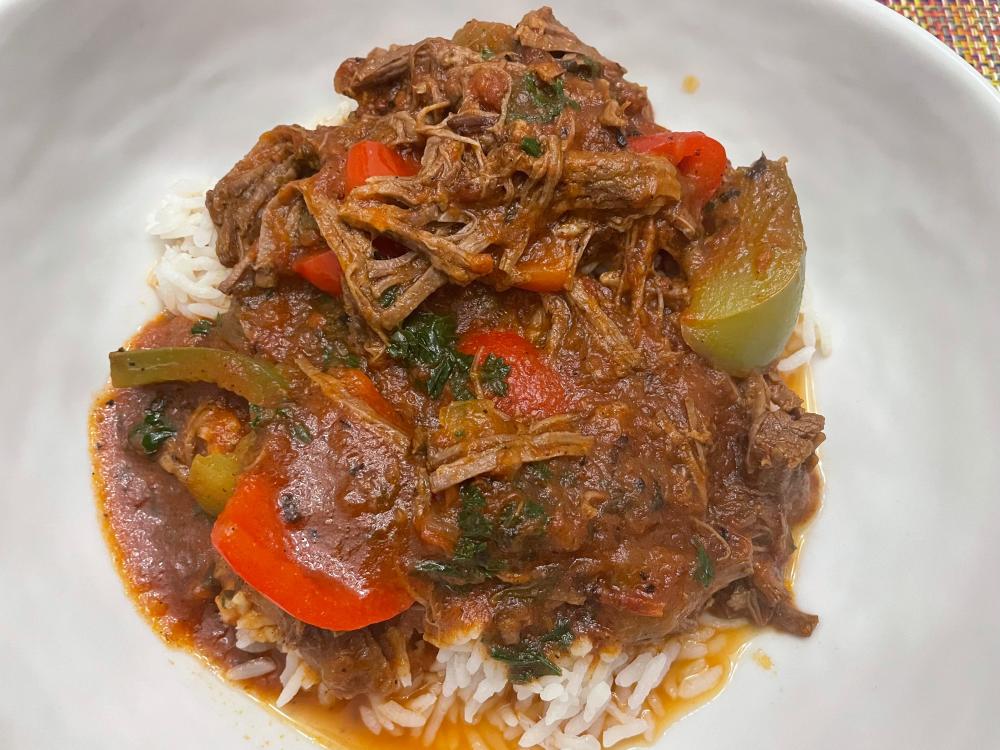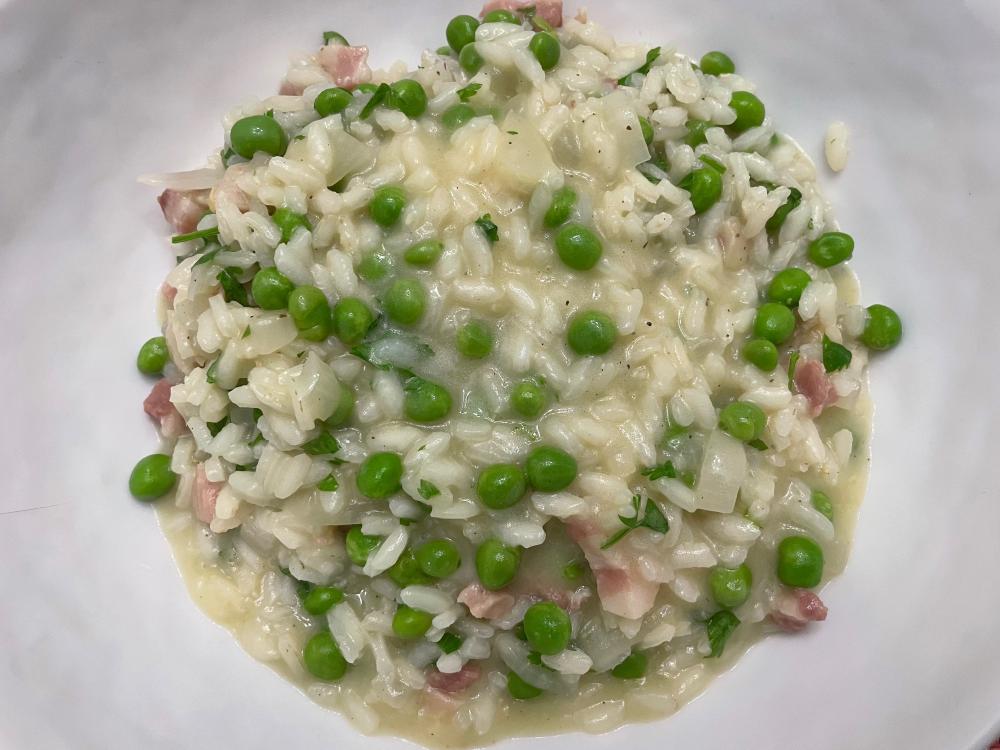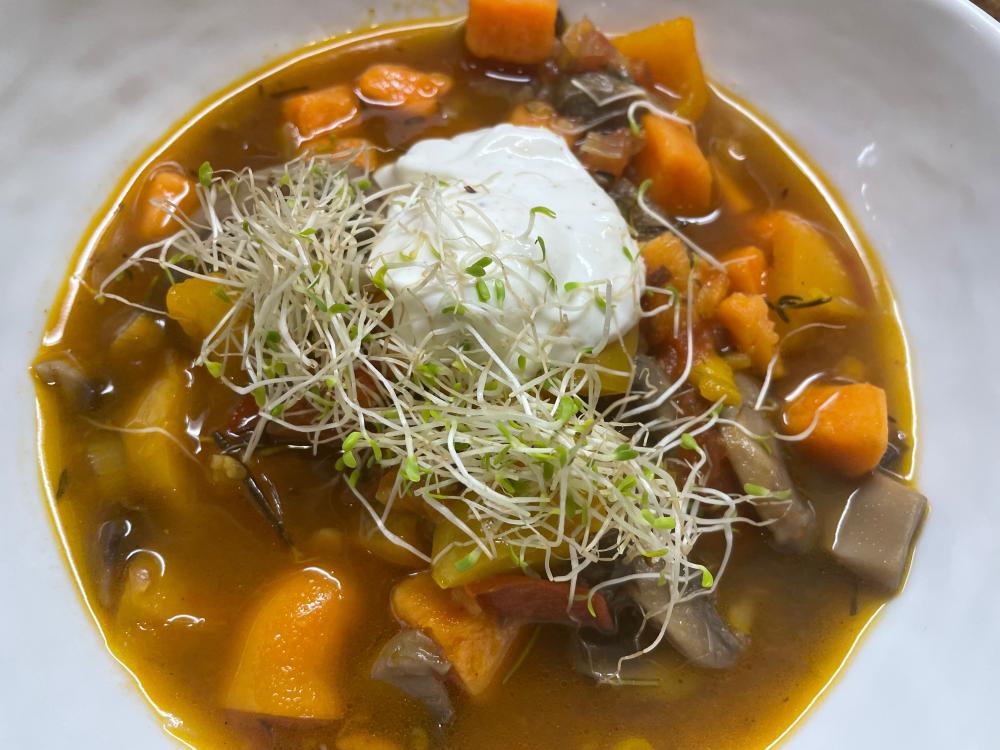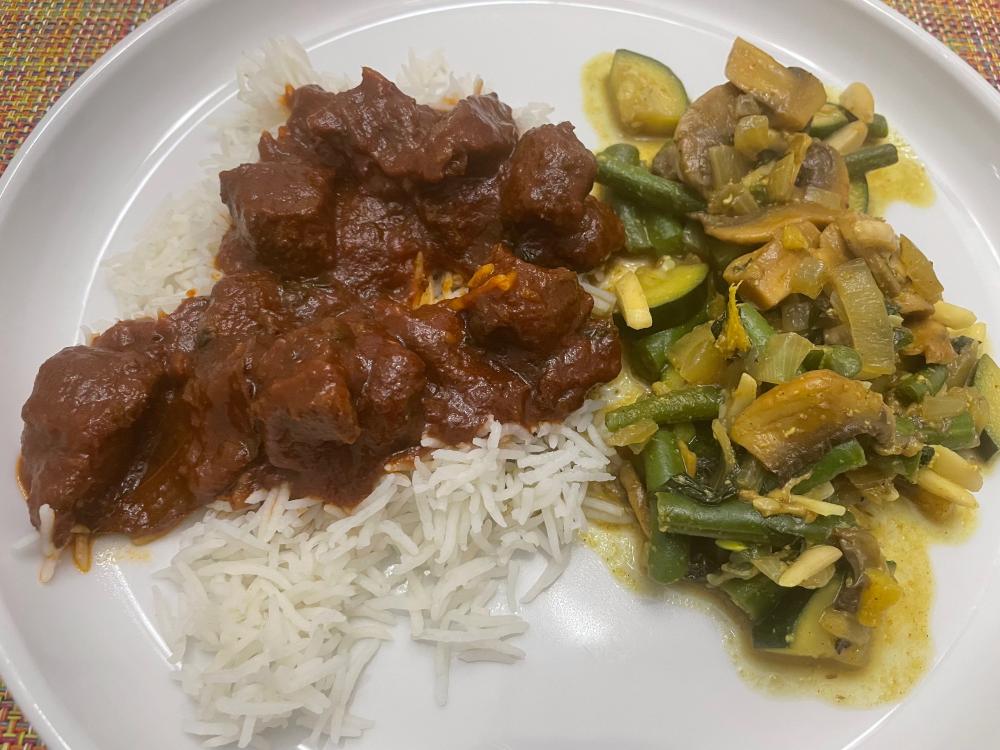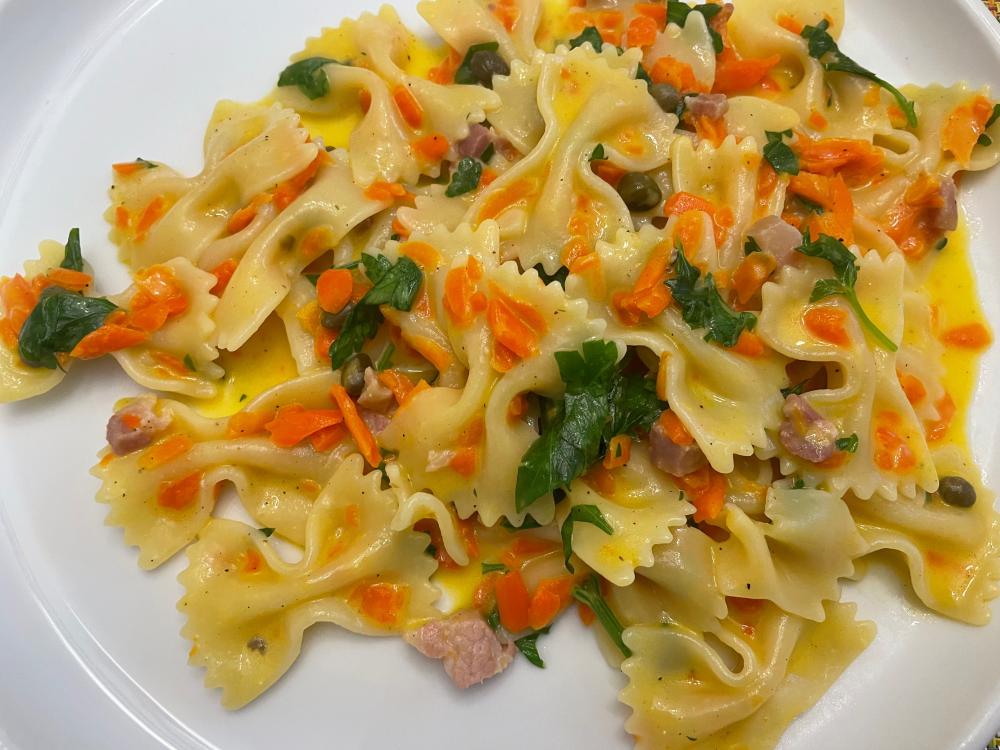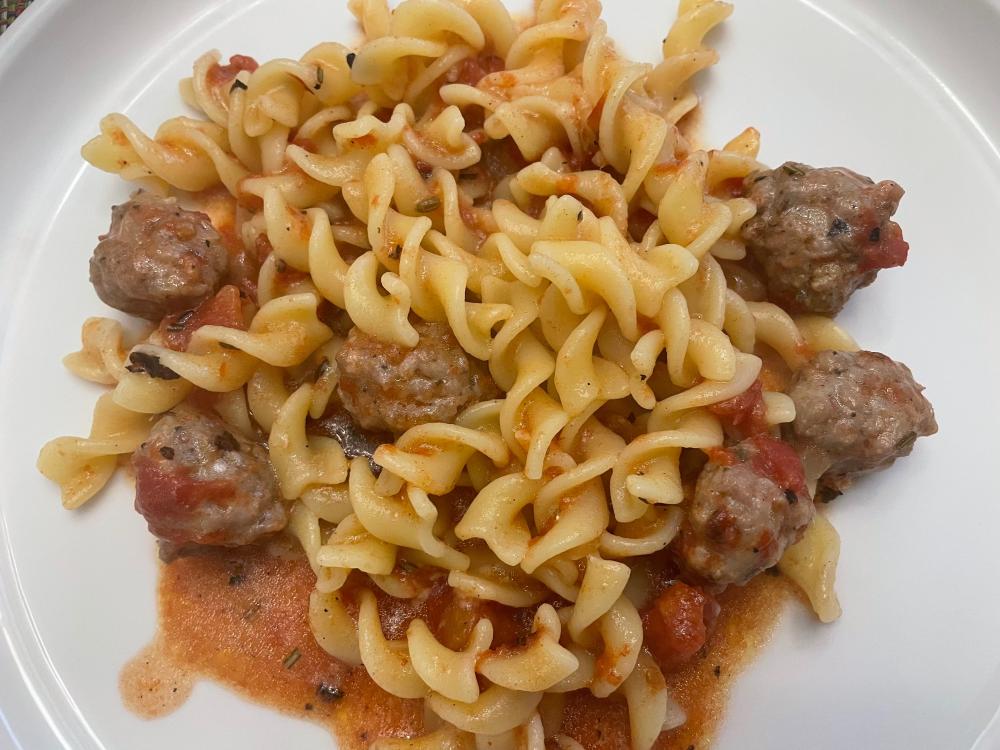-
Posts
1,317 -
Joined
-
Last visited
Content Type
Profiles
Forums
Store
Help Articles
Everything posted by Honkman
-
Chili con carne with red kidney beans and green peppers - made with onions, garlic, ground beef, tomatoes, lard and spice mix of ancho chili, sirarakhong chili, cumin, basil, bay leaf, cinnamon and cloves. Served with sour cream
-
Risotto Primavera with asparagus, leeks, peas, garlic, parmesan and a little bit of lemon juice. Finished with a parsley-mint-lemon zest gremolata.
-
-
Potato ragout with curry, white wine, veal stock, heavy cream, orange zest and dill. Served with quickly seared shrimps and scallions as well as braised carrots in marsala wine.
-
-
Lentil soup with bacon, carrots, onion, garlic, thyme, parsley and balsamic vinegar - 1/3 puréed to get the right creamy consistency
-
-
Whole wheat spaghetti with asparagus, pancetta, red onion, garlic, capers, hard boiled egg, pine nuts, lemon juice and parmesan.
-
Lentil stew with black lentils, fennel, green beans, dried tomatoes, thyme, fennel seeds and garlic. Served with some sour cream with grated lemon peel
-
Shaanxi-style ground lamb (with freshly roasted and ground cumin and fennel seeds, cinnamon sticks, garlic, chili flakes, soy sauce, chinkiang vinegar) and oven-roasted green beans and grape tomatoes. Served over rice
-
Stir-fried shrimps, green beans and scallions with a sauce made from ginger, garlic, chili-garlic paste, quick broth from the cooked shrimp shells, soy sauce and sesame oil
-

Beyond the Great Wall - Jeremy Alford and Naomi Duguid
Honkman replied to a topic in Cookbooks & References
It doesn’t answer your questions completely but here is a list of all recipes in the book with the ingredients. It should give you a good idea if these ethnic minority foods are covered https://www.eatyourbooks.com/library/3758/beyond-the-great-wall-recipes -
Vegetable curry with potatoes, cauliflower, chickpeas, peas and a sauce made from diced tomatoes, curry powder, garam masala, ginger, chili, garlic and little bit of coconut milk. Served over rice
-
Warm quinoa salad with harissa-grilled chicken thighs (marinated overnight in a olive oil, harissa and lime juice mixture), oven roasted tomatoes (roasted in a mixture of olive oil, balsamic vinegar, cumin and harissa), avocados, chorizo, baby spinach, scallions and cilantro. Served with sour creme with lime zest
-
Ropa Vieja - with flank steak cooked in the pressure cooker with onions, garlic, green and red peppers, oregano, cumin, olives and vinegar. Served over rice
-
Wild boar burger with a topping of crispy bacon and sautéed pears, onions and leeks and yoghurt-wild blueberry jam spread
-
Start with sautéing pancetta, onion and garlic for a few minutes. Add carnaroli and toast for 1-2 minutes. Add white wine and cook until evaporated. Add chicken broth (750 ml for 165 g rice) all at once and cook for 20 minutes (so no need to stir constantly as with “regular” risotto) and add parmesan, peas and some butter in the last minute.
-
Risi e bisi - the low effort risotto with carnaroli rice, pancetta, peas, parmesan, onion, garlic, white wine, chicken broth, parmesan and parsley
-
Quick stew with sweet potatoes, yellow peppers, mushrooms, scallions, tomatoes, thyme and rosemary - served with yoghurt (mixed with lemon zest and juice) and alfalfa sprouts.
-
Simple but yet complex tasting lamb curry in a sweet onion-tomato sauce from 660 Curries. Sauce was made from coriander, cumin, paprika, turmeric, sirarakhong chili, ginger, garlic, cardamom pods, bay leaves, fried onion paste, cilantro and tomato sauce. Served with basmati rice and some vegetables (mushrooms, zucchini, green beans) mixed with onions, ginger, turmeric, coriander, garam masala, mint, almonds and some yoghurt.
-
Farfalle with shredded carrots in a creamy sauce - first sautéed the shredded carrots then added several cups of water and cooked the farfalle directly with the carrots. Once al dente just added some cream, butter, capers, parsley, parmesan, sautéed pancetta and nutmeg
-
Not very photogenic brown blob but very tasty Japanese beef curry - cooked cubed beef chuck in a pressure cooker in a mixture of caramelized onions, garlic, ginger, garam masala, carrots, apple, bay leaf and beef broth for 25 minutes. Released pressure, added sweet potato and shiitake mushrooms and cooked another 5 minutes under high pressure. Released pressure again and simmered some mustard greens in the mixture. During the simmering you make a quick roux from flour, garam masala, ketchup, soy sauce, Worcestershire sauce and some beef broth and added it to the curry to thicken. Served over rice.
-
Fettuccine with shrimps (briefly seared with cherry tomatoes and sliced garlic) in a sauce made from parsley, mashed feta and avocado and pasta water.
-
Fusili with meatballs (made from salsicce) in a sauce from diced tomatoes, onion, garlic, rosemary, fennel seeds and parmesan.
-
Normally between 7-7:30pm sometimes later




